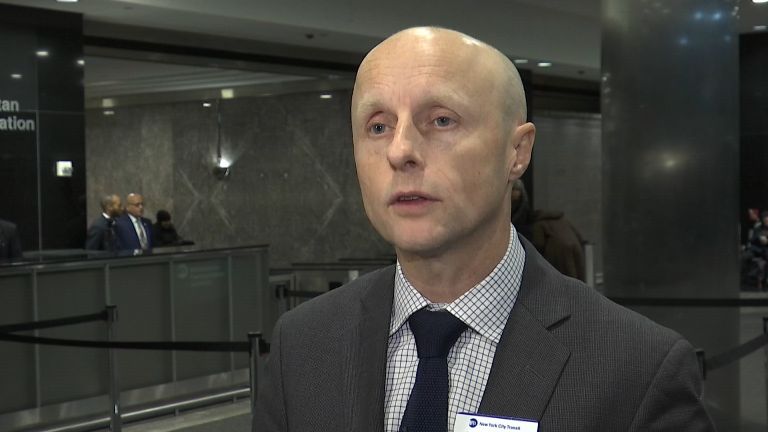Quick, it’s pop quiz time: can you name the last five people who ran the city’s subways?
If you were able to come up with a name besides Andy Byford, you probably deserve a MetroCard made of real gold rather than a plastic one. And while even Byford was hardly a household name in New York City, there’s a fair chance that plenty of straphangers could actually identify him if he strolled through their subway station. (And odds are that he had at some point.)
In his two years of running the troubled subways and buses, Byford was the opposite of a faceless bureaucrat, actually going out of his way to talk to angry riders, harried MTA employees, and not-always-well-informed elected officials about the many problems underground. He was even somewhat creepily dubbed “Train Daddy” by a legion of fans on social media.
While no one will confuse our mass-transit system today with Tokyo’s, it’s come a long way since 2018, with on-time performance improving and a sense that things were turning in the right direction because a responsive and visible public official was at the helm of the Transit Authority.
But enter Andrew Cuomo – a governor who never wants equal billing in the movie of New York politics. While Cuomo recognized the importance of Byford, he couldn’t have loved it when Byford – and not the governor – was the focus of a "60 Minutes" piece that focused on the turnaround of the subway system.
It was an upstaging of sorts because before Byford’s arrival, Cuomo was warming to the idea of being hailed as the city’s mass-transit savior. He got personally involved in the completion of the long-delayed Second Avenue Subway project – even throwing a private New Year’s Eve party at the East 72nd Street station, just hours before it opened to the public on the first day of 2017.
So when Andrew got elbowed out by the arrival of Andy a year later, what’s a poor governor to do if he wants to remind people that he’s the one in charge? His answer was to save the L Train from being shut down while hurricane-damaged cables were set to be replaced in its tunnels.
Like a homeowner who didn’t like what he was hearing from his contractor, Cuomo found a solution that would allow the train to run while the repairs were being made – a solution that may not be as long-term as the original plan but allowed riders to still take the train.
But it’s a solution that never seemed to be embraced by Byford and likely led to the collapse of his relationship with the governor, a relationship that was so badly strained that the two men didn’t appear together or speak for months.
After MTA officials last year proposed scaling back Byford’s job responsibilities, word leaked out last October that Byford was quitting – only to quickly un-quit after there was a lot of public outcry by straphangers and elected officials. But like a couple that breaks up and then tries to get back together, it didn’t take. Byford quit for good last week, forcing the governor to comment about his departure at an unrelated news conference.
“He did the job for two years. You know, nobody does these jobs for a lifetime, ‘’ said Cuomo, who is in his tenth year in office and is planning to run for a fourth term in 2022.
As Super Bowl Sunday approaches, Cuomo should remember that smart coaches don’t force out their star quarterbacks. Before Byford, the best-known state employee under Cuomo was the governor’s former right-hand man, Joe Percoco, who is currently in prison after being convicted on corruption-related charges.
After Byford announced his resignation, the trains still managed to run on time this weekend, and they’ll likely continue doing that as they have since the subways started running in 1904. But it will be a challenge for MTA and state officials to replace Byford after he was essentially ridden out of town on a rail.
Train Daddy went out for a pack of cigarettes and he’s not coming back.
For more of Bob's columns, visit the NY1 Political Buzz homepage.
SIGN UP FOR OUR POLITICAL NEWSLETTER:



